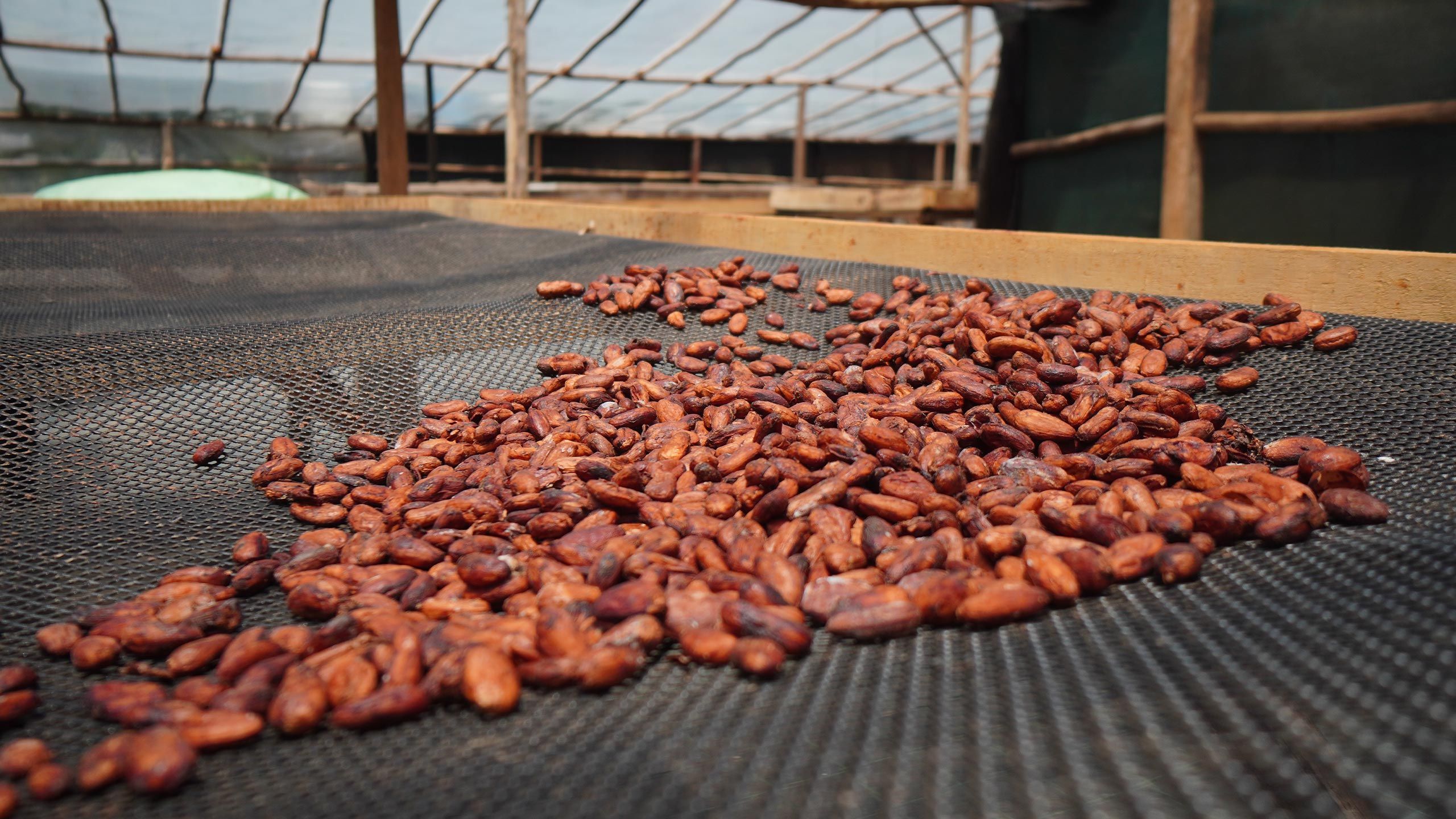Raw cacao - a myth?

Does raw cacao really offer so much more for us and our health than other forms of conventional cacao?
Is the hype about the superfood and its ceremonial use really justified? And why the name 'raw cacao'? These questions also occurred to us when we first came into contact with ceremonial cacao. They are also completely justified at this point - we want to ensure transparency so that you can form your own opinion.
To understand why there is a distinction between 'regular' and 'raw' cacao in the vernacular, let's first take a brief look at the cacao mass manufacturing process. After the cacao fruits have been harvested by hand, they are opened and the cacao seeds or beans are removed. They are then placed together with their pulp in large vessels for fermentation. The heat that prevails in the tropical growing regions, coupled with the high sugar content of the pulp, ensures that the mass ferments. The alcohol produced during this process prevents the seeds from germinating. This production step causes the beans to lose their bitterness and they acquire their classic, full cocoa aroma. In the next step, the beans are dried to preserve them. The most natural and energy-saving method here is to dry the beans directly under the sun's rays or in large, airy rooms.
Even up to this processing step, the cocoa beans are naturally exposed to heat. On the one hand, the fermented mass reaches temperatures of up to 50°C as a result of fermentation, and on the other hand, no upper temperature limit can be guaranteed during natural drying by the sun.
Many suppliers of ceremonial cacao state that it is raw and thus unroasted. This titling is intended to infer maximum preservation of nutrients and thus the highest possible health benefits. However, the designation of food as 'raw' is not legally protected and is therefore not subject to any specific requirements. In common parlance, the term 'raw food' refers to food that has not exceeded the 42-47°C margin. As can now be seen at this point, this promise cannot be kept for the usual cocoa mass production. This contradiction becomes even clearer with the subsequent production step, roasting.
Roasting the cacao, which involves temperatures of 100-150°C, creates new flavor compounds that give the cacao its familiar aroma and make it edible in the first place. It also ensures that microbial contamination of the cacao is reduced. An alternative procedure by which the germs can be killed is a sterilizing steam bath. If this procedure is chosen in order to be able to use the cacao without health risks, temperatures of over 100°C are also reached.
It is often read that heating the cacao above 47°C would result in a loss of its nutrients. These include the flavonoid epicatechin, which is said to have various positive health effects. Through our own research, we found that the amount of the flavonoid epicatechin decreases when heated above 70°C. The core temperature of epicatechin is the temperature at which it is most effective. However, reaching this core temperature is essential for the production of a cacao suitable for consumption, as described. Furthermore, we have come across several sources (1; 2) that demonstrate that the health benefits of cacao can even be enhanced by roasting (depending on temperature & duration) due to an increase in flavonoids. Ultimately, it is primarily the Dutching process that has been shown to reduce the levels of the flavonoids catechin and epicatechin to as low as 20%, and 2% respectively. This process is used in conventional cocoa products. However, we ensure minimal processing of the cacao, so this step is deliberately omitted.
In summary, the term 'raw cocoa' does not mean that its raw form has been preserved. Natural temperature influences alone mean that a core temperature of a maximum of 47°C cannot usually be maintained. In addition, many producers often lack the transparency in their production process to be able to make reliable statements about the exact processing steps and conditions.
Unlike in the mass industry, where strong heating of the cacao up to burning is not uncommon, our cacao beans are roasted gently, as the indigenous peoples of Central and South America have done since time immemorial.
For the sake of the environment, we recommend always preparing raw cacao with vegan milk alternatives. Furthermore, research (see Serafini et al. 2003) indicates that milk can impair the absorption of the antioxidants contained in cacao and thus reduce or prevent potential health benefits.
We hope that this article has brought a little more clarity to the topic of raw cocoa. If you know of any research projects or studies that could expand our knowledge in this regard, we would of course be happy to hear from you at any time.
Our own raw cocoa varieties:
Sources
Studies
Payne, MJ, Hurst, WJ, Miller, KB et al. (2010): Impact of Fermentation, Drying, Roasting, and Dutch Processing on Epicatechin and Catechin Content of Cacao Beans and Cocoa Ingredients. Journal of Agricultural and Food Chemistry (58) 19. 10518–10527. DOI: https://doi.org/10.1021/jf102391q
Penn State (2018): Cocoa bean roasting can preserve both chocolate health benefits, taste. ScienceDaily. Available here: www.sciencedaily.com/releases/2018/04/180404163629.htm
Serafini, M., Bugianesi, R., Maiani, G. et al. (2003): Plasma antioxidants from chocolate. Nature 424(1013). DOI: https://doi.org/10.1038/4241013a
More
Published
11th of August 2022
Author
Hanna Krause
Reading time
4 minutes